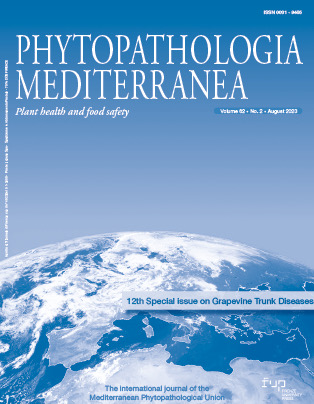Fusarium oxysporum f. sp. lycopersici biomass variations under disease control regimes using Trichoderma and compost
Published 2023-07-23
Keywords
- Area Under Population Dynamic Curve (AUPDC),
- biological control,
- quantitative PCR
How to Cite
Copyright (c) 2023 Amgad SALEH, Arya WIDYAWAN, Anwar SHARAFADDIN, Ali ALMASRAHI, Younis HAMAD

This work is licensed under a Creative Commons Attribution 4.0 International License.
Funding data
-
Deanship of Scientific Research, King Saud University
Grant numbers RG-1440-001
Abstract
A comprehensive understanding of population dynamics of pathogens and bioagents in plant rhizospheres is important for improving organic farming. Fusarium oxysporum f. sp. lycopersici (FOL30) causes Fusarium wilt of tomato. In this study, we compared biomass variations of FOL30 under different disease control regimes, using Trichoderma asperellum TA23 strain, compost, or their combination. Biomass variations of FOL30 and TA23 were observed for 13 weeks using quantitative real-time PCR. Separate applications of TA23, compost, and their combination all reduced FOL biomass when compared to experimental controls. Regression analyses of the qPCR data showed that FOL populations fitted curvilinear polynomial order 3 regression models (R2 = 0.87 to 0.95). Areas under the population dynamic curves (AUPDCs; log10 ng DNA week-1 g-1 soil) were: 43.8 from FOL30 alone, 36.6 from FOL30 plus TA23, 25.4 from FOL30 plus compost, and 25.5 from FOL30 plus TA23 plus compost. These results indicate that the individual applications of TA23 or compost, or their combination, decreased the FOL biomass. The negative correlation between TA23 and FOL30 populations showed that the compost and biocontrol agent reduced FOL pathogen populations. This study demonstrates that compost fortified with T. asperellum TA23 decreased FOL populations and reduced disease, and that their use is a promising strategy for managing Fusarium wilt of tomato in organic farming.






